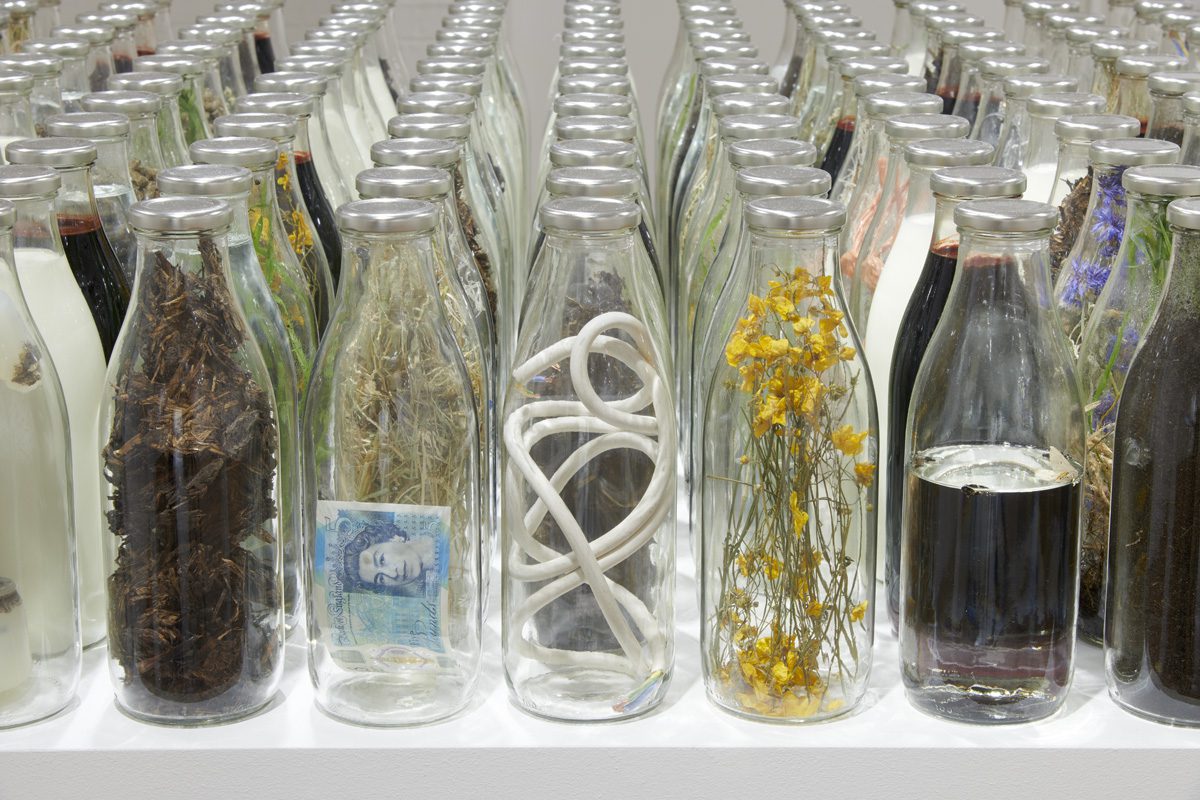As part of Future Knowledge artist Andy Owen created Whole Milk, a new conceptual installation that takes a fresh look at innovations in farming domesticated livestock. Below Andy discusses the inspiration behind the work and his collaboration with North Aston Dairy.
I grew up on dairy farm in Shropshire and I’ve always cared about the provenance of the food I buy. Whole Milk began out of a desire to raise awareness about the impact we have through the choices we make about everyday products we take for granted. In recent times, issues around industrial agriculture, animal welfare and climate change have come into focus, with dairy at the centre of the debate.

Dairy farms occupy a tough niche where milk is a loss leader – supermarkets dictate prices paid to farmers with scant regard for actual production costs. This has caused smallholders (small-scale farmers) to go under while mega dairies have grown to fill the gap and turned to intensive methods in pursuit of dwindling profit margins – most cows live indoors, eating cheap soya grown far away, while the methane they produce contributes to climate change.
In researching Whole Milk I worked with North Aston Dairy – a small scale producer who buck the trend with a modest herd grazing on organic pastures. I spent a day getting my hands dirty working on the farm and learning from Josh, Graham and Will about how they do things differently. North Aston pasteurise and bottle the milk on site, and sell directly to customers in traditional re-usable glass milk bottles. At the time of my visit in May it was the peak of the ‘spring flush’ when grass is at it most nutritious and the surplus milk yields were being made into ice cream. They maximise the benefits from every aspect of their business, crucially they make use of an overlooked by-product of the dairy industry – meat. To produce milk a cow must have a calf every 12 -16 months, in industrial systems male calves are of no commercial value, destroyed at birth and the carcass incinerated. North Aston challenges this unpleasant practice raising all of its calves to produce rose veal. The calves are free-range and fed a natural diet, turning ‘waste’ into sustainable organic meat. I came away with an appreciation of how much they care for the animals in their charge and how inventive they are working with natural rhythms and processes, viewing these as opportunities rather than obstacles.

The environmental and societal impact of producing a bottle of milk can vary dramatically dependent on the method of production. Whole Milk – an installation of 144 milk bottles representing the component parts of the dairy production system – encourages consideration of all of these connected elements. The land and the wider environment are represented by soil, water and air. Wild flowers, grass, feathers and insects are nourished directly or indirectly by manure. The farmers are present through feed supplements, veterinary tools and milking machine parts. Engine oil, power and network cables, and money show the connection to the consumer. Stage blood represents the cattle as a visceral embodiment of their purpose: to live and to die to feed us.
The dairy and beef industries are central to our way of life, the least we can do is ensure that they are managed in a way that is sympathetic to the needs of cattle and is beneficial to the environment rather than an added burden. If we are prepared to consume a little less and pay farmers a little more for what they do we might all enjoy a bright sustainable future.
